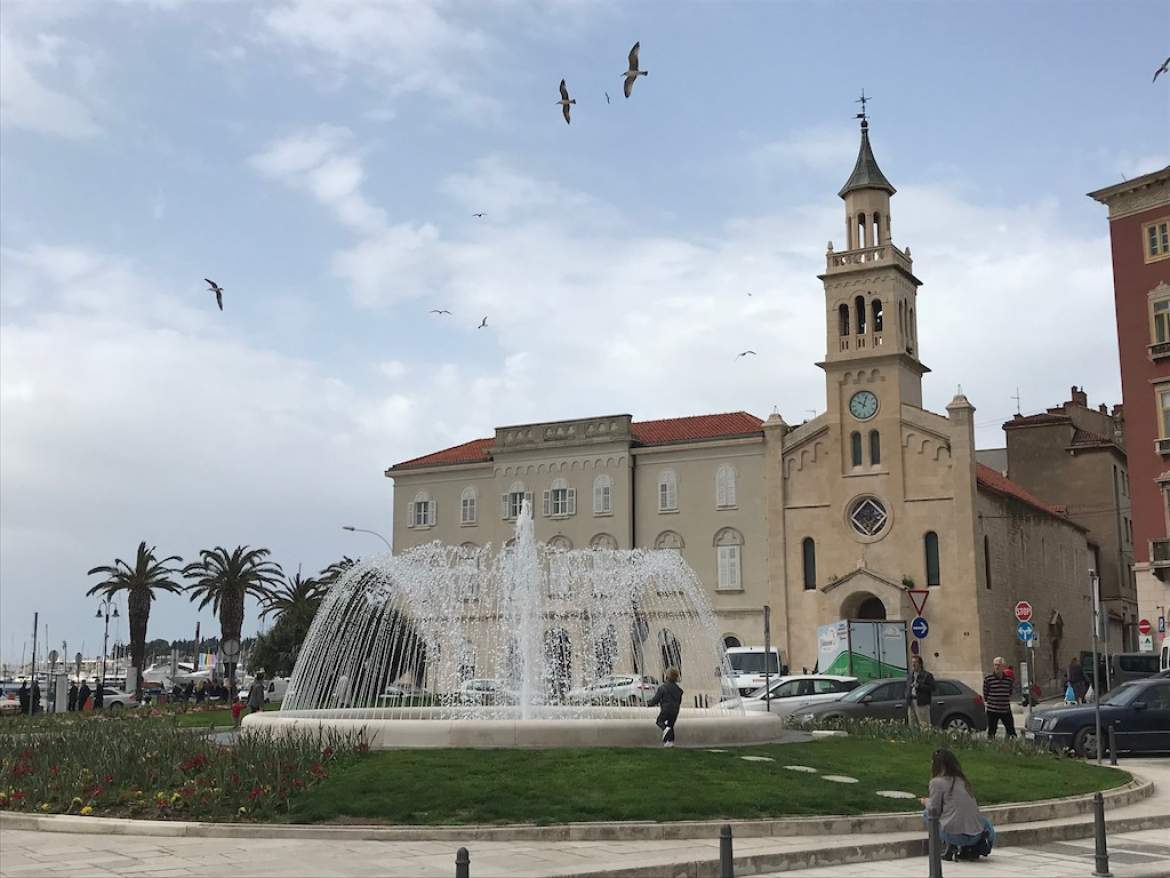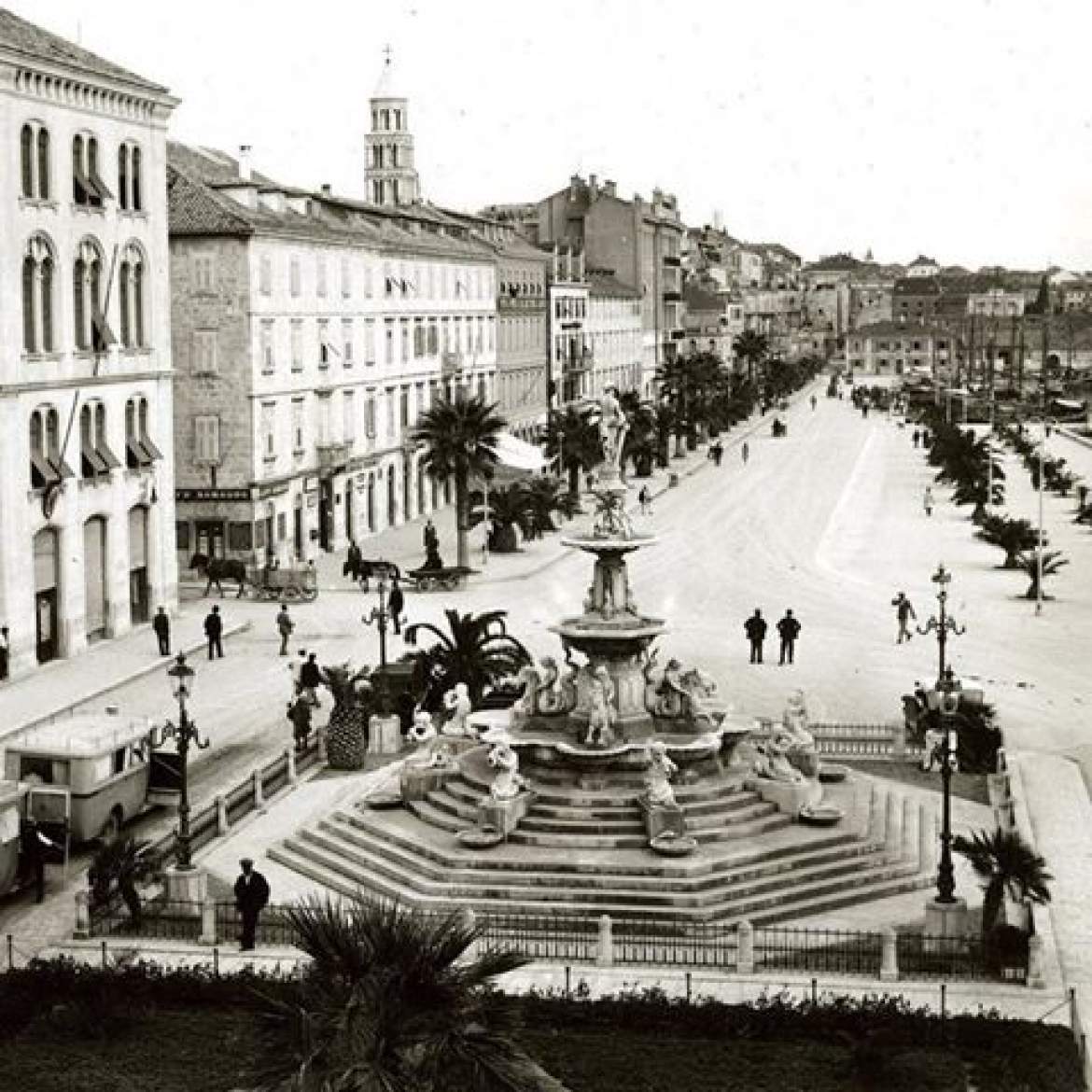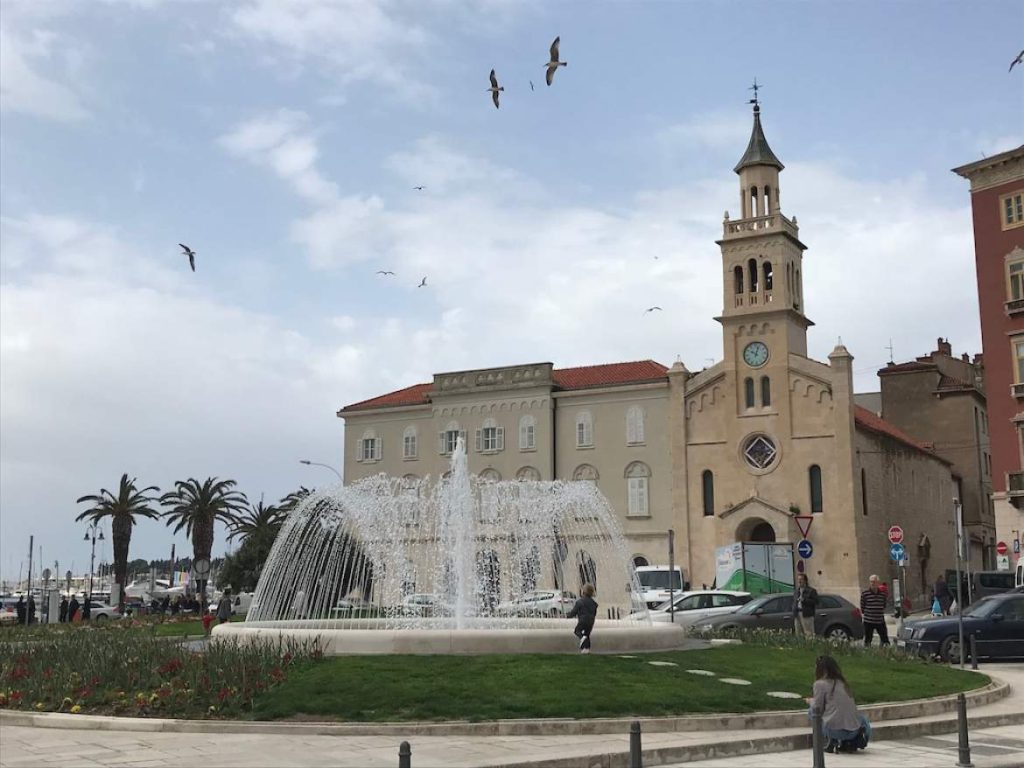
September 20, 2020 – The city of Split has issued a call to restore the former monumental Bajamonti fountain in the city center near Sv. Frane Church.
Slobodna Dalmacija reports that the monument, which is better known to us as Bajamonti, was not called that in its time, and it got its name because of the diligent efforts of the then-mayor Antonio Bajamonti to erect the fountain. The main restoration project should be completed in 60 days, and the estimated value is around 100,000 kuna.
Before submitting an offer, the bidder should inspect the existing documentation, which is available on request at the Split City Museum by e-mailing Marijan Cipcic, the documentation states. For those who do not know, Cipcic is the president of the Cultural Heritage Friends Association and was appointed by Mayor Andro Krstulovic Opara to lead the project.
“The main project needs to be prepared following the existing documentation. After signing the contract, the investor undertakes to submit to the developer the existing documentation according to which the main project is prepared,” it is pointed out on the City’s website where it is stated that the conservation study was made by Katja Marasovic, academician Nenad Cambj, and Ivana Prijatelj Pavicic, and the detailed design for the restoration of the monumental fountain was made in 1991 by Jerko Marasovic and Marija Marasovic. The one chosen by the City will receive “original photographs of the monumental fountain from the City Museum”.
The deadline for submitting bids is short – only eight days, and the project must be completed within two months.

Split kroz Povijest
It is important to point out that Opara’s government also gave up on the tender for the fountain design and the arrangement of Franjo Tudjman Square, which was supposed to be conducted in 2016. What will a replica of this monumental fountain look like in the middle of traffic chaos, surrounded by motorcycles, bicycles, taxis, a bus turnaround, and numerous traffic signs?
As Drazen Pejkovic, urban planning advisor to the then-mayor Baldasar said four years ago, the tender was to solve the sculpture of the fountain and the space, to be applicable for various purposes, including occasional events, such as concerts.
“Within all topics related to the urban-architectural tender, defining the fountain’s shape is the backbone of the future solution. The author’s proposals for the future fountain’s typological solution should be connected and harmonized with the organizational, installation, functional, and traffic elements of the solution, which must be following the overall urban ambiance of the Riva” said Pejkovic.
The monumental fountain was of cultural importance because it marked the arrival of public drinking water in Split. It also had the then urban significance for the view of the coast and the visual connection of the Riva with Prokurative (but not a special artistic value). Bajamonti, which was an allegorical monument, was not without political symbolism.
The then-mayor Antonio Bajamonti, a staunch autonomist, who was already an irredentist at the time, ordered the Monumental Fountain in Milan in 1880, in the last year of his (city) term as mayor, when he lost the support of the majority Croatian people. In the same year, dissatisfied with Vienna’s introduction of the Croatian language in Split schools, he sent his private militia, the “bersagliere,” to the local people who were celebrating.
The sculpture at the top of the fountain, according to the entry about Bajamonti in the Italian encyclopedia “Treccani,” represented Dalmatia, and with its left hand pointed to the Danube, reminiscent of the borders of the Roman Empire, with the importance of the former Salona to take Split.
Some of our experts claim that the hand was pointing towards Bosnia as a direction with which Split should be economically connected. However, it did not point to Zagreb because Bajamonti was against Dalmatia’s unification with Croatia and Slavonia.
The fasces held in the hand by a young man on top of an allegorical sculpture was taken over from ancient Rome in the 1870s by Italian nationalists and irredentists, after Italy’s unification, to emphasize the need to unite all countries they considered their own. There was a tendency to mitigate this symbolism in our country by interpreting it as a matter of unity of citizens.
In 2016, the tender failed because the conservators voted against the restoration of Bajamonti.
According to the document from 2016, signed by the head Dr. Radoslav Buzancic, Dr. Sandi Bulimbasic, and Dr. Ambroz Tudor, the conservators decided to arrange the location on the site of the former fountain, in height and width but expressed concern that the restoration for which there is no precise documentation would be kitsch.
In this way, they challenged the conclusion previously made by the City Council to make a monument, “which will largely respect the appearance of the old fountain demolished in 1947”.
After it was previously unequivocally established that the original fountain could not be restored, this formulation opens the possibility of all kinds of imitations, even the lowest quality, because even the worst imitation will be closer to the competition propositions than, for example, top work, observed in an authorial way, the conservators noted in their assessment, adding that the restoration is being avoided today because it is not an original monument.
Also, conservationists have called for establishing an expert commission to determine the propositions for the tender to avoid poor results. But, this tender, which was planned in Baldasar’s time, was not even started, as soon as it was realized that the restoration would continue.
Mayor Andro Krstulovic Opara has thus connected with the Cultural Heritage Friends Association. Then, some claim, to avoid local experts, they sought the opinion of the Croatian Council for Cultural Heritage for a conservation study.
“The conservation study has been completed and sent for expert opinion to the Croatian Council for Cultural Heritage, an advisory body of the Ministry of Culture for performing professional and other tasks in the field of protection and preservation of cultural heritage. After that, my appointment followed,” Marijan Cipcic said last year.
If the study, based on which the developer of the main project is requested, does not have the conservator’s consent, the insiders claim that it is illegally skipping the Conservation Institute.
The investor can appeal to the second instance within the Ministry of Culture, a higher instance in the Cultural Heritage Administration, against the decision of the regional conservation institute, but cannot skip the entire conservation institution, so within the UNESCO zone work only based on the Croatian Council for Cultural Heritage.
Slobodna Dalmacija asked Cipcic whether they have the consent of the Croatian Council for Cultural Heritage and the conservators.
“The Croatian Council for Cultural Heritage did not discuss the conservation study for the restoration of the Monumental Fountain. When the preparation of the main project for the renovation of the Monument, for which a call for bids was published on the City’s website on September 15, is completed, the entire document will be submitted to the competent authorities for further action,” said Cipcic.
For the latest travel info, bookmark our main travel info article, which is updated daily.
Read the Croatian Travel Update in your language – now available in 24 languages
Join the Total Croatia Travel INFO Viber community.









